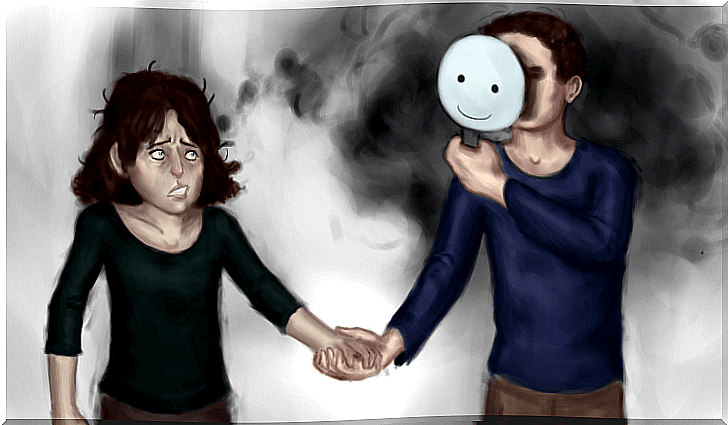3 Strange Failed Identification Syndromes

The human mind is still a mystery to science. He is capable of creating the most impressive ideas, but also the most surprising absurdities. Proof of this are the failed identification syndromes. These are distortions of thought that lead those affected to represent reality in a strange way, so to speak.
One of the main symptoms of misidentification syndromes is thought-content delusions. Delirium is a belief that the person considers to be true, even if it has no empirical or logical foundation.
In failed identification syndromes these delusions or illusory convictions are present. They lead to the construction of a perception of the self and of others that has nothing to do with reality. They are often part of more complex psychiatric illnesses or neurological disorders. These are three of those syndromes.
1. Capgras delusion, one of the failed identification syndromes
Capgras syndrome or Capgras delusion is a disorder that leads someone to believe that one of the people close to them has been replaced by an imposter. They assume that the person they are familiar with is actually a doppelganger. This inability to recognize is what makes it one of the failed identification syndromes.
What happens in Capgras delusion is that the person manages to physically recognize someone who is close, but the feeling of familiarity does not appear in their mind. It is a sensory perception without subjective sensations or feelings. Hence the impression of strangeness that others inspire in him.
What there is is a disconnect between the visual recognition system and affective memory. Capgras delusion can also be self-directed. In this case, someone suffering from this problem thinks that he himself has been replaced by another. This usually happens as part of a psychosis or as a result of a brain trauma.

2. Delirium of Fregoli
Fregoli delirium is a rare condition that is part of the missed identification syndromes. It is related to paranoia and presents itself in a number of ways. In the most typical, the person believes that he has a persecutor and that he is capable of assuming various appearances. Therefore, when you see someone you know, you may believe that it is that persecutor, who took a familiar way to deceive you.
Another way in which this delusion manifests is almost the opposite of the above. The person thinks he knows strange people. When he sees them, he identifies them with beings that are familiar to him. Likewise, you may believe that you know places or objects that you do not really know.
Although science has not exactly established the causes, it is known that the disorder has to do with a malfunction of the “associative nodes”. That is, with the ability to synchronize physical and mental perceptions. It is usually caused by a brain injury or as part of a paranoid delusion.

3. Othello syndrome
Jealousy always has a strong component of imagination. In fact, they are lived more in fantasy than in reality. What there is is a constant suspicion, which is rarely verified or corresponds to the facts. In the case of Othello syndrome, this is taken to its maximum expression.
In Othello syndrome there is an obsessive conviction that the partner is unfaithful. There is no doubt about it and the only thing that is expected is to be able to catch that person “in action”. What makes it one of the misidentification syndromes is the fact that the sufferer cannot see (or identify) their partner as they really are. What you see in that person is a traitor or traitor. Therefore, he spends a lot of time and energy looking for proof of his infidelity.
Something characteristic of Othello syndrome is that the affection “sees” the presence of a third party, permanently within their relationship. However, when asked about the characteristics of that person with whom her partner would be betraying her, she cannot give reason. Only very rarely does he point out some facts about it.
Those mentioned are not the only failed identification syndromes. There are several more. The common thing in all of them is that difficulty to recognize or recognize themselves. They almost always have to do with psychiatric pathologies of a certain seriousness and therefore need to be treated by a professional.









